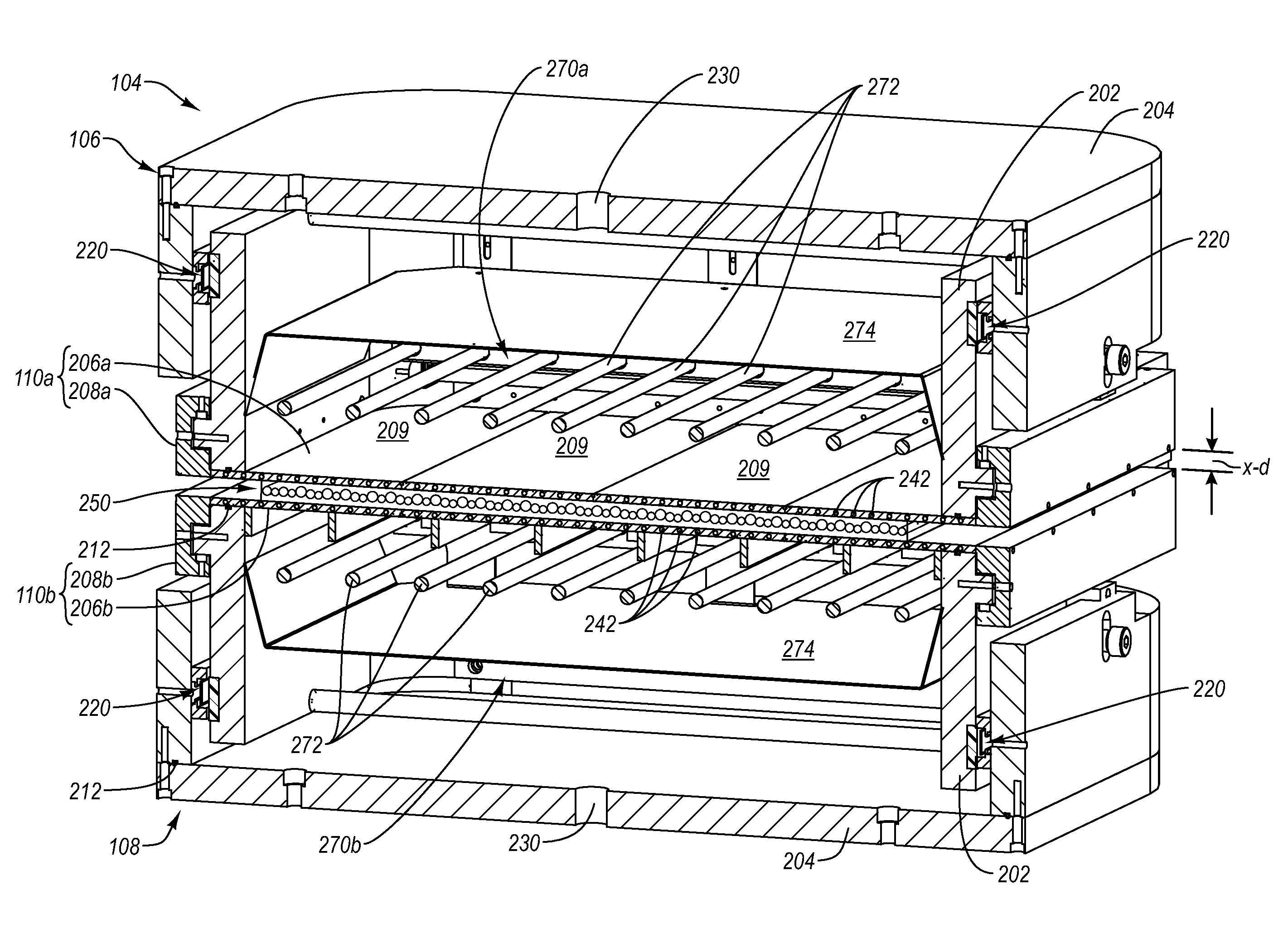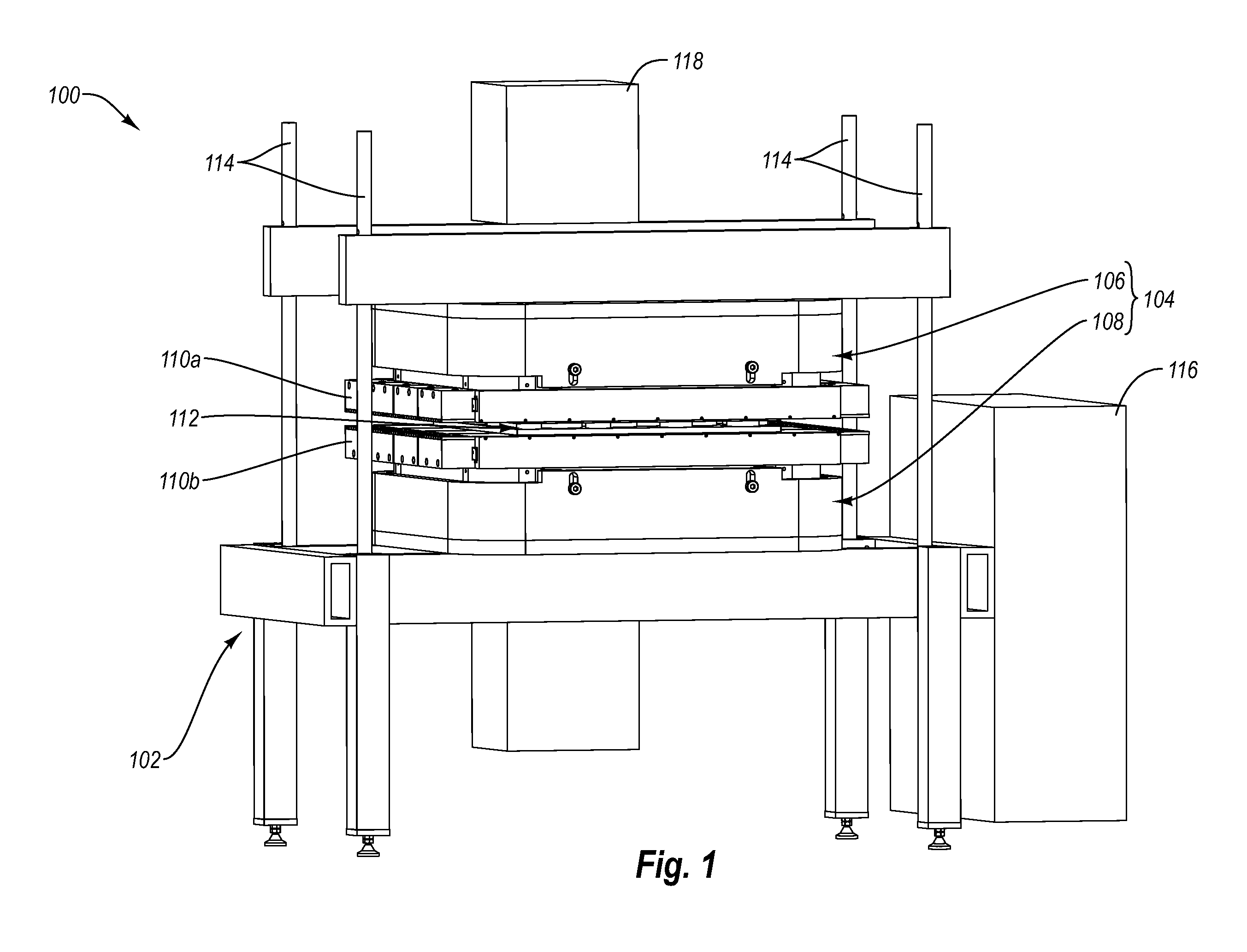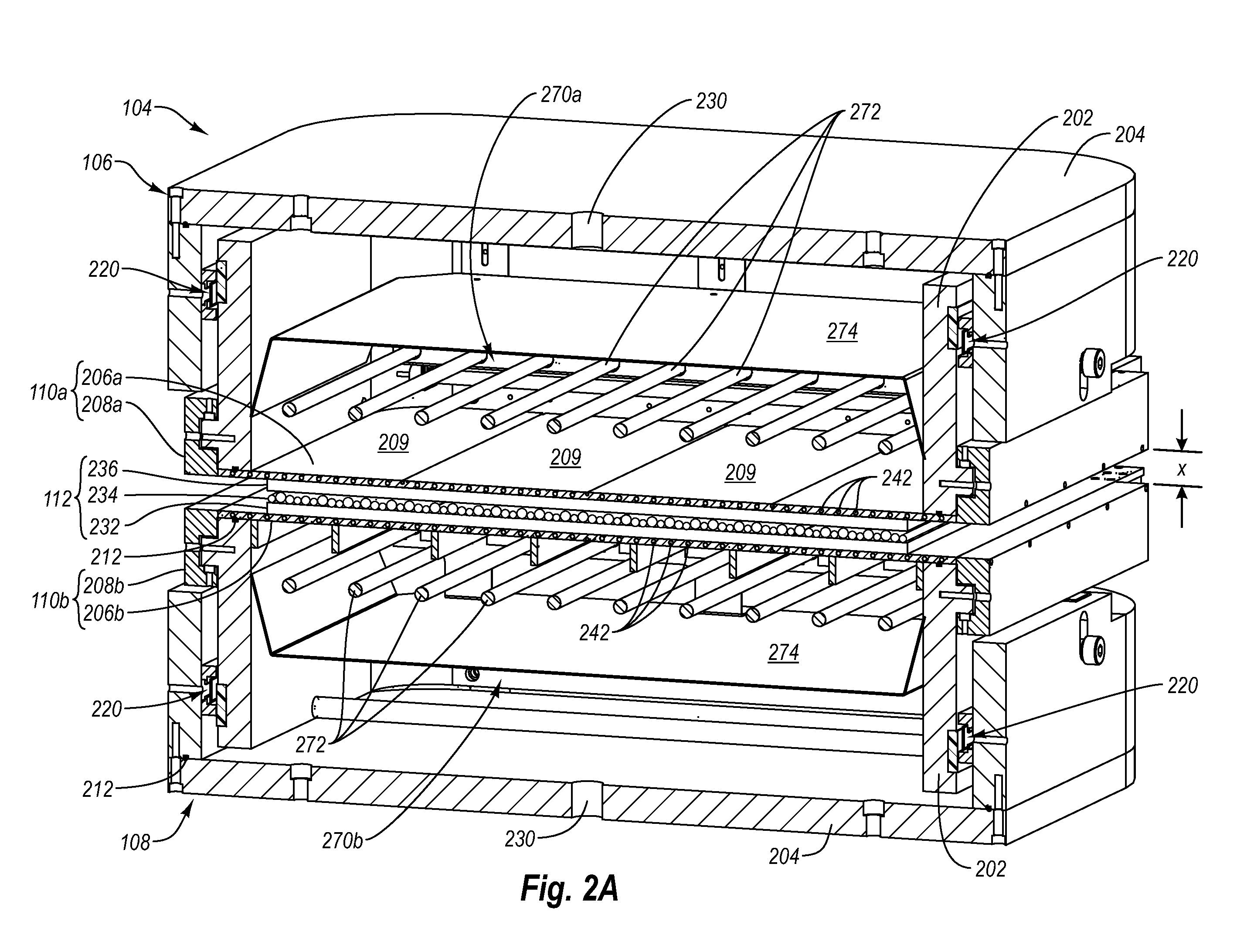Efficient lamination press with radiant heating
a technology of lamination press and radiant heating, which is applied in the direction of manufacturing tools, soldering devices, auxillary welding devices, etc., can solve the problems of reducing the efficiency of introducing significant overhead and inefficiency into the resin panel production process, and affecting the quality of the resin panel. , to achieve the effect of improving efficiency, reducing the time of lamination process, and excellent structural and aesthetic properties
- Summary
- Abstract
- Description
- Claims
- Application Information
AI Technical Summary
Benefits of technology
Problems solved by technology
Method used
Image
Examples
Embodiment Construction
[0030]The present invention relates to systems, methods, and apparatus for applying heat and pressure to a laminate assembly with increased efficiency, while still producing final products with excellent structural and aesthetic properties. In particular, implementations of the present invention comprise apparatus that can decrease lamination process times by providing rapid and uniform heating and cooling. Additionally, implementations of the present invention comprise apparatus that quickly and efficiently process laminate assemblies, while requiring less energy and labor than conventional lamination processes.
[0031]More specifically, one or more implementations of the present invention include a lamination press that uses radiated heat from one or more heating elements to efficiently heat one or more opposing platens. One will appreciate in light of the disclosure herein that by using radiant heating, the lamination press can rapidly and precisely heat a laminate assembly, and th...
PUM
| Property | Measurement | Unit |
|---|---|---|
| pressure | aaaaa | aaaaa |
| pressure | aaaaa | aaaaa |
| pressure | aaaaa | aaaaa |
Abstract
Description
Claims
Application Information
 Login to View More
Login to View More - R&D
- Intellectual Property
- Life Sciences
- Materials
- Tech Scout
- Unparalleled Data Quality
- Higher Quality Content
- 60% Fewer Hallucinations
Browse by: Latest US Patents, China's latest patents, Technical Efficacy Thesaurus, Application Domain, Technology Topic, Popular Technical Reports.
© 2025 PatSnap. All rights reserved.Legal|Privacy policy|Modern Slavery Act Transparency Statement|Sitemap|About US| Contact US: help@patsnap.com



